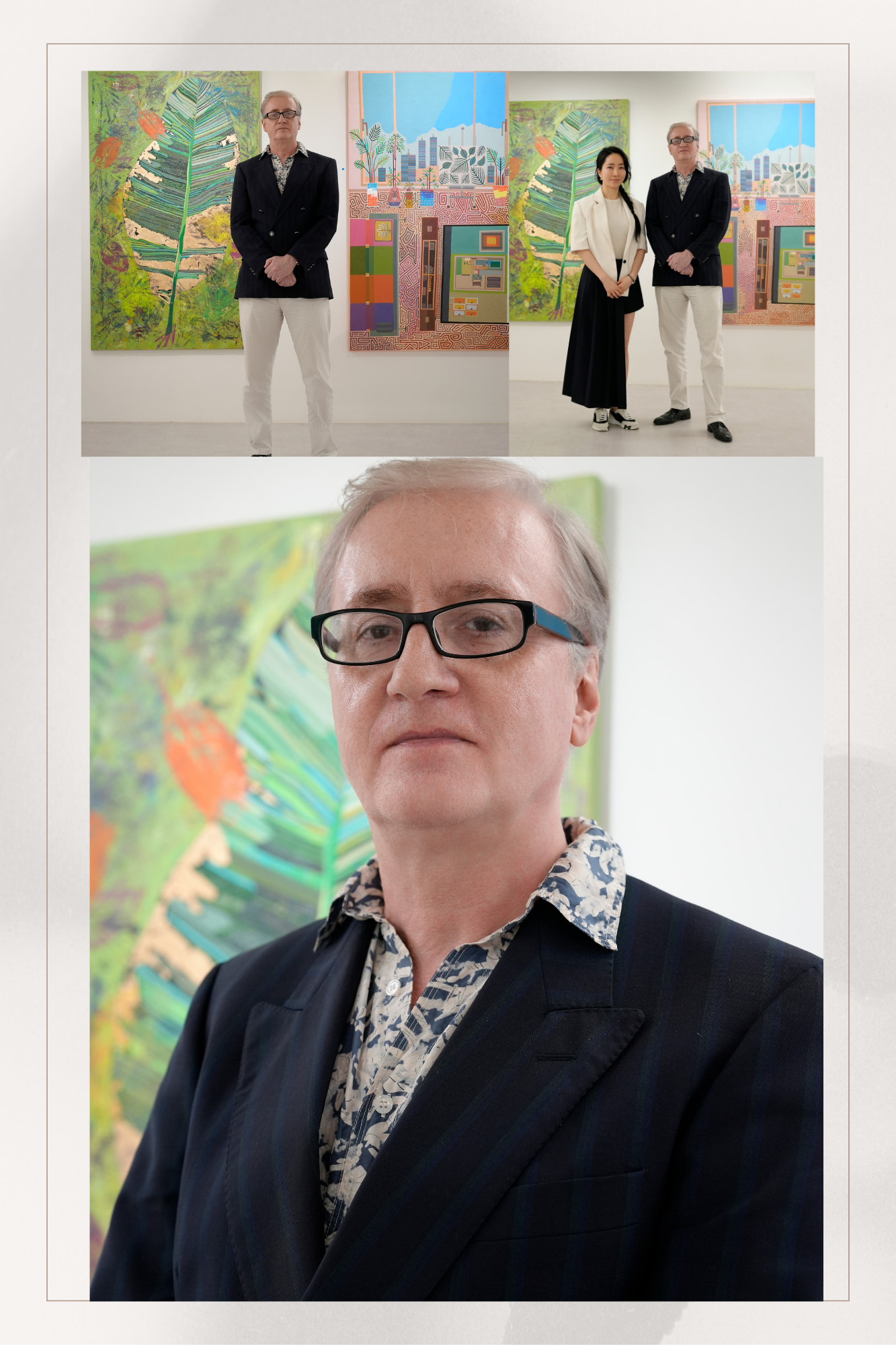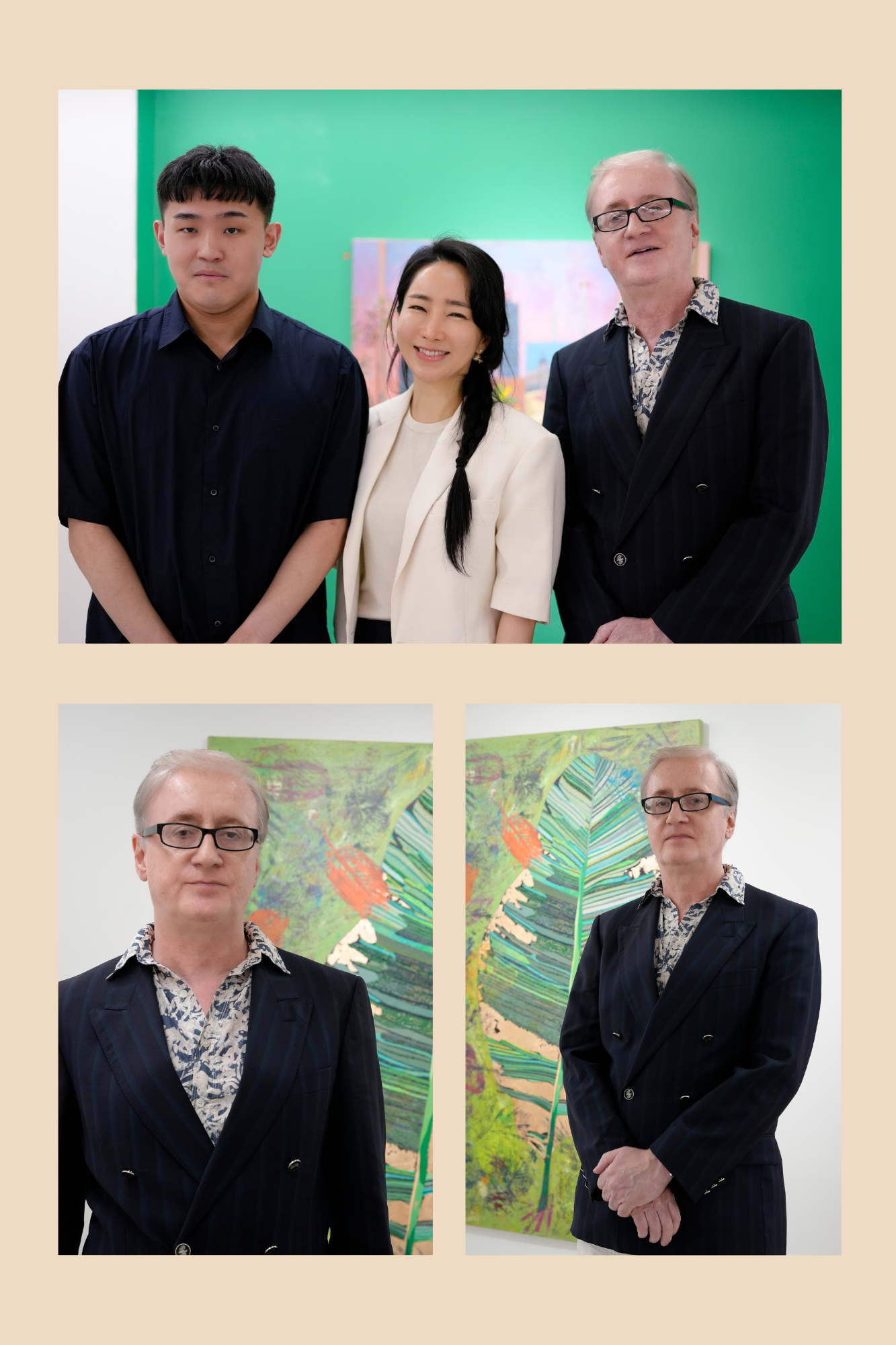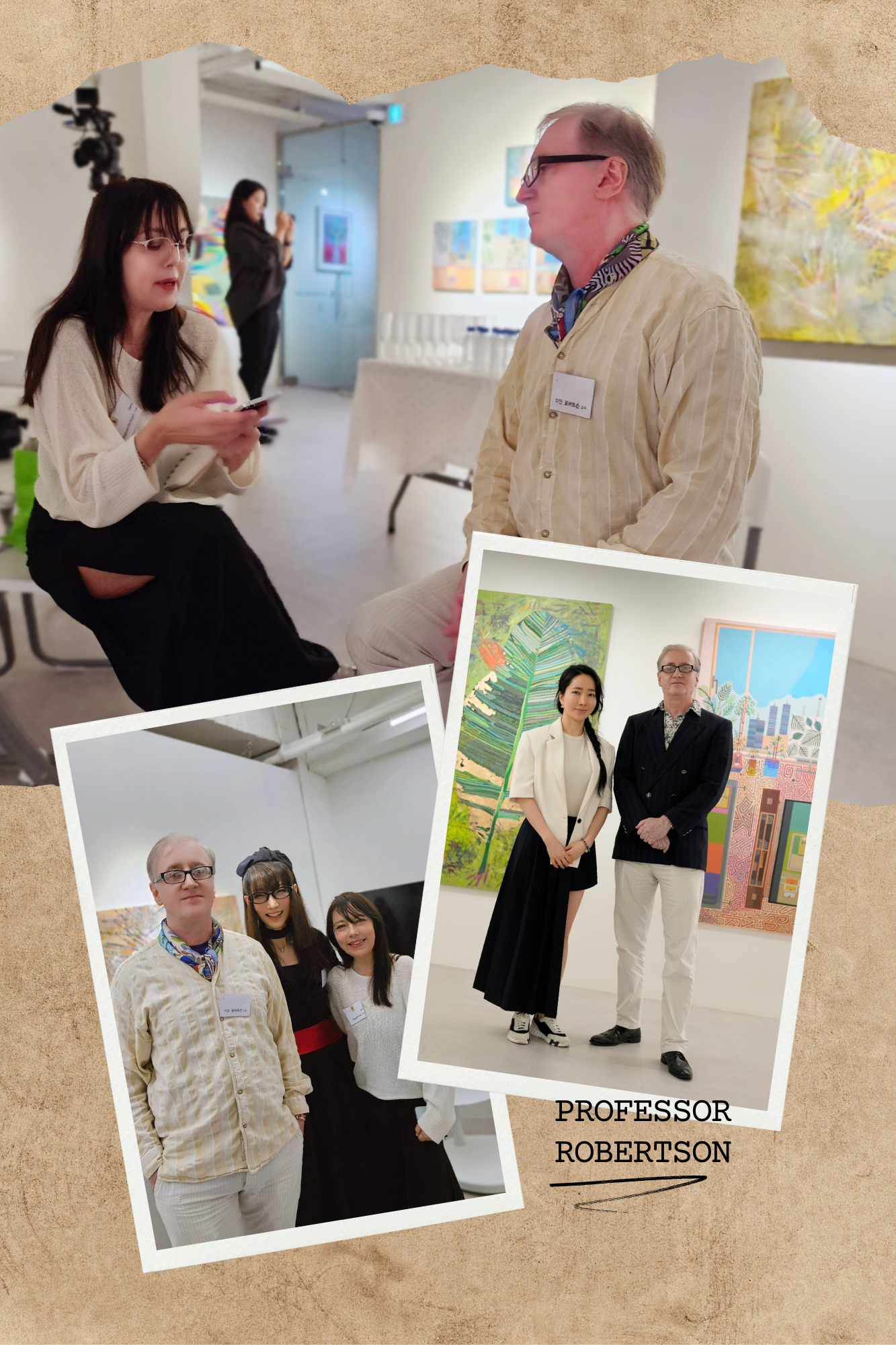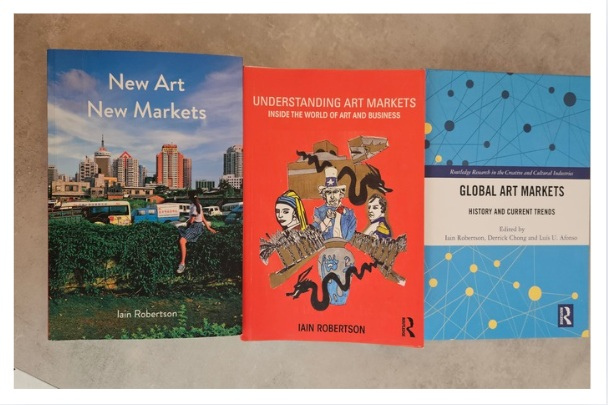In the ever-evolving landscape of global art, few figures stand as prominently as Professor Iain Robertson. With a rich background that spans continents and cultures, Robertson's work has been pivotal in bridging the gap between Korean and Western art. As a Professor of the Department of Arts and Cultural Management at Hongik University in Korea, and with past roles including Head of Art Business Studies at Sotheby's Institute of Art in London, his influence is both profound and far-reaching. Having lived in Korea for the past three years, Robertson's affinity for Asian culture began during his time working in foreign affairs in China and Taiwan. This early exposure to Asian art and culture eventually led him back to London, where his tenure at Sotheby's deepened his understanding of the global art market. After 17 years, he decided to return to Asia, this time to Korea, where he continues to make significant contributions to the art world. I had the pleasure of meeting Professor Robertson during the Art Talk titled ‘Le Salon de Feliz (Feliz's Living Room),’ held in conjunction with the exhibition from May 1st to June 12th at K-Liz Gallery. Today, we delve into his journey, his impact, and the significance of promoting Korean art on the global art market stage.

Ianina: Professor Robertson is a pleasure to meet you and thank you for agreeing to this interview. What inspired your journey into the art world, and how did it lead you to Korean art?
Professor Robertson: Thank you Ianina, My journey began in London at Sotheby's Institute of Art, where I had the privilege of heading the Art Business Studies. This role opened my eyes to the vastness of global art cultures. My interest in Korean art was sparked during my consultancy with the Korea International Art Fair. The depth and uniqueness of Korean artistic expressions fascinated me, leading me to Hongik University, where I've been able to immerse myself in both traditional and contemporary Korean art. I'm particularly fascinated by how art schools in Korea focus on practical skills like drawing and painting, which is a refreshing contrast to the more theoretical approach often found in Western education. Additionally, I've authored two books, "New Arts, New Markets" and "Understanding Art Markets (Inside the World of Art Business)," as well as co-authored "Global Art Market: History and Current Trends" with Derrick Chong and Luis U Alfonso, which explore these dynamics in depth.
Ianina: Why did you choose to get involved with the artist Felix Park?
Professor Robertson: My involvement with Felix Park began through my connection with Liz, the CEO and owner of K-Liz Gallery. We met at an exhibition of AI art from a French group, and I was immediately drawn to the gallery's unique approach. Liz's commitment to providing space for emerging artists, particularly those who are young and talented, resonated with me. I appreciated the gallery's dedication to making art accessible to the cultural market, which aligns with my own values. Felix Park's work caught my attention due to its innovative blend of Korean and Western artistic elements, making him a perfect example of the cultural bridge I aim to promote.

Ianina: When did you realize the importance of connecting Korean and Western art?
Professor Robertson: The realization came during my early years at Sotheby's, where I witnessed the potential for cross-cultural exchanges in the art world. This understanding was further solidified during my consultancy roles in Korea. By highlighting the unique qualities of Korean art to a global audience, I've been able to foster a richer exchange of ideas and artistic practices between the East and the West. This is crucial for both cultures, as it allows for a deeper understanding and appreciation of each other's artistic heritage.
Ianina: Where do you see the role of young Korean artists in this cultural exchange?
Professor Robertson: Young Korean artists are at the forefront of this cultural exchange. They bring fresh perspectives and innovative approaches to traditional art forms, making them accessible and appealing to a global audience. By embracing both their cultural roots and contemporary influences, these artists are redefining what it means to be a Korean artist in the modern world. Their work is crucial in promoting Korean art abroad and ensuring its relevance in the global art market.
Ianina: Who has influenced your perspective on the global art market?
Professor Robertson: My perspective has been shaped by many experiences, but working at Sotheby's and collaborating with international artists and curators have been particularly influential. These experiences provided me with the networks and knowledge to facilitate connections between Korean and Western art effectively.

Ianina: How do you believe this cultural exchange impacts the art world?
Professor Robertson: The impact is significant. By fostering a cross-cultural dialogue, we encourage artists to explore and integrate diverse artistic traditions, leading to innovative and enriched art forms. This exchange broadens the perspectives of art enthusiasts and collectors, promoting a more inclusive and interconnected art world. As artists like Felix Park and the younger generation continue to gain recognition, they pave the way for future collaborations and understanding between the Korean and Western art communities.
Ianina: Thank you, Professor Robertson, for your time and for sharing your insights on this important cultural connection, and for opening the Korean Art Market to the Western World.
Professor Robertson: Thank you, Ianina. It's an exciting time for art, and I'm honored to be part of this journey in bridging cultures through creativity.
In conclusion, in a world where art serves as a universal language, Professor Iain Robertson stands as a testament to the power of cultural exchange. His journey from London to Korea is not just a personal adventure but a bridge connecting diverse artistic traditions. Through his work with young artists, as an art critic, his expertise in Global Art Marketing, and his insightful publications, Robertson has enriched both the Korean and Western Art Communities, fostering a dialogue that transcends borders. His story is a reminder of the beauty that emerges when cultures collide and collaborate, creating a richer, more vibrant tapestry of creativity. As we continue to explore and appreciate these connections, let us be inspired by Robertson's vision of an Art World that celebrates diversity and innovation.

- Professor Robertson is currently teaching at the Department of Arts and Cultural Management at Hongik University in Seoul, Korea
- Art Critique.
- Writer.
- Global Art Consultant.
How about this article?
- Like5
- Support2
- Amazing1
- Sad0
- Curious0
- Insightful0


